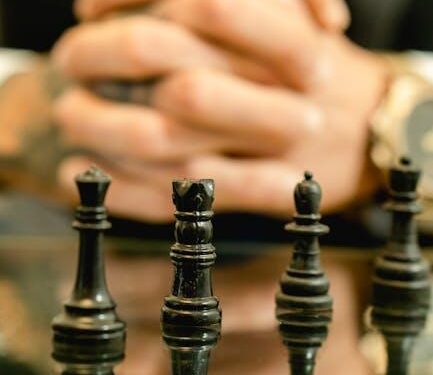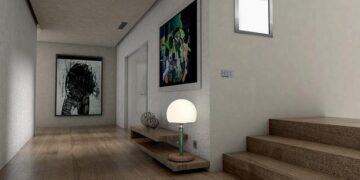Table of Contents
I. Executive Summary: The Genesis and Legacy of an Icon’s Eyewear
Kareem Abdul-Jabbar’s distinctive goggles, an enduring visual hallmark of his illustrious career, were not a stylistic choice or a fashion statement.
Instead, they emerged as a critical necessity, born from a series of severe and recurring eye injuries that threatened his ability to play at the highest level.
The pivotal moment arrived in 1974 with a second, more traumatic corneal scratch, an incident so impactful it also led to a self-inflicted broken hand, compelling him to adopt protective eyewear permanently.
Despite initial discomfort and significant challenges with peripheral vision, Abdul-Jabbar and his dedicated support team innovated to find an optimal design.
This transformation of a medical requirement into an iconic element of his legendary career underscored his adaptability and commitment to the game.
His consistent use of goggles not only safeguarded his vision but also inadvertently championed player safety in the National Basketball Association (NBA), influencing future generations and becoming a powerful symbol of resilience in professional sports.
II. Introduction: The Iconic Eyewear and its Enduring Legacy
Kareem Abdul-Jabbar stands as one of basketball’s most dominant and recognizable figures, a towering presence whose signature “skyhook” shot remains unparalleled.
Equally iconic, and perhaps even more visually distinctive, were the protective goggles he wore for the majority of his career.
While these goggles became synonymous with his image, instantly conjuring his unique silhouette, their origin story is rooted in a pragmatic need for protection rather than a fashion statement or a pre-existing vision impairment.
They are consistently referred to as his “trademark goggles” 1 and “iconic eyewear” 2, underscoring their profound association with the athlete.
This report delves into the precise circumstances that led to Abdul-Jabbar’s adoption of this protective gear, tracing the evolution of their design, and examining their broader impact on his unparalleled career and the league’s history.
What began as a functional necessity ultimately transcended its utility, transforming into a defining visual characteristic of one of the greatest athletes.
This evolution cemented his unique persona in sports history, making the goggles a “permanent part of his identity” 4 and a symbol that carried a significance far beyond their initial purpose.
III. The Genesis of Necessity: Early Eye Injuries and Their Impact
Kareem Abdul-Jabbar’s journey to adopting his signature goggles was a direct consequence of multiple, painful eye injuries sustained during the highly physical nature of professional basketball.
These incidents progressively highlighted the critical need for robust ocular protection.
The 1968 UCLA Incident: The First Warning
The very first significant eye injury for Kareem, then known as Lew Alcindor, occurred in January 1968 during his junior season playing for the UCLA Bruins.
An opponent accidentally scratched his left cornea.2
This incident, while serious, did not immediately lead to his consistent and permanent use of protective eyewear throughout his collegiate or early professional play.
It served as a stark precursor, a potent warning of the physical toll basketball could exact, and was, in his own recollection, the first of “five since 1968”.8
This initial injury foreshadowed a recurring vulnerability that would eventually demand a permanent solution.
The Pivotal 1974 NBA Injury: The Definitive Catalyst
The more severe and definitive incident that compelled Abdul-Jabbar to adopt consistent protective eyewear occurred during his fifth NBA season, while playing for the Milwaukee Bucks in the 1974-75 preseason.2
In a preseason contest, an errant hand raked across his eye, once again scratching his cornea.2
This type of injury, a scratched cornea, had become a persistent and painful problem for him.8
Crucially, this particular incident provoked a furious and uncharacteristic reaction from Abdul-Jabbar.
In a moment of intense rage, he punched the backboard stanchion, breaking his right hand.2
This dual injury—a severe eye trauma coupled with a self-inflicted broken hand—had significant consequences, resulting in him missing the first sixteen games of the regular season.2
Upon his return to action on November 23, 1974, he began wearing protective eyewear consistently.8
While one source mentions him starting in 1975 10, the detailed accounts confirm his consistent wear began in late 1974.
The profound emotional and psychological impact of the 1974 incident, far beyond mere physical pain, solidified his resolve.
Abdul-Jabbar’s own words underscore the severity of his situation and his newfound fear: “I’ve got to conserve my eyeballs,” he explained, adding, “I’m down to my last pair.” He further articulated the necessity, stating, “It’s the type of injury I keep getting…
so, it’s necessary for me to have something to protect myself.” He even confessed, “I played scared”.8
This act of rage and his subsequent admission of fear indicated a deep personal and traumatic experience that mandated a permanent protective solution, making the goggles not just a medical recommendation but a personal imperative for his well-being on the court.
The repeated nature of these eye injuries, specifically corneal scratches, points to a particular vulnerability, likely exacerbated by his imposing height and aggressive playing style.
As a 7-foot-2 center 3, Abdul-Jabbar operated predominantly in the congested paint area, where physical contact, including errant hands and elbows, was constant.
Walt Clyde Frazier, a contemporary, noted that getting “swiped in the eye” seemed to happen often to him, attributing it to his height.11
Defenders, often unable to reach the ball when Abdul-Jabbar executed his skyhook, would “swat futilely at a ball they could rarely reach,” sometimes resorting to swatting “at Abdul-Jabbar’s face”.7
This recurring pattern of eye injury was a direct consequence of the inherent physicality of his position and the defensive tactics employed against him, making the need for protective gear an occupational hazard.
Table 1: Key Eye Injuries and Goggle Adoption Timeline for Kareem Abdul-Jabbar
| Year | Context/Team | Type of Injury | Specific Impact/Consequences | Decision/Action Regarding Goggles |
| 1968 | UCLA Bruins | Scratched left cornea | First significant eye injury; one of five recurring injuries | Did not immediately adopt consistent protective eyewear |
| 1974 | Milwaukee Bucks (Preseason) | Scratched cornea | Provoked rage, punched stanchion, broke right hand; missed 16 regular season games; played scared | Adopted consistent protective eyewear upon return (November 23, 1974) |
IV. From Initial Reluctance to Permanent Fixture: Kareem’s Goggle Journey
The path to Kareem Abdul-Jabbar’s iconic goggle look was not immediate or without challenges.
His initial experience with protective eyewear was marked by significant discomfort and performance limitations, prompting a crucial search for an optimal design that would allow him to maintain his elite level of play.
Initial Discomfort and Performance Challenges
Abdul-Jabbar initially expressed a clear dislike for wearing his goggles, finding them cumbersome.1
The first protective eyewear he adopted immediately after the 1974 injury resembled “skier or scuba diver” goggles, described as having an “aviator look”.2
This early design, while offering some protection, proved to be a significant functional drawback.
He quickly realized that this “clunky style” severely limited his peripheral vision, a critical aspect of his game, rendering it “unacceptable” for competitive play.2
He explicitly voiced his concern, stating, “I can’t see people sneaking around near the hoop,” and expressed a desire for “wraparounds” to improve his visibility.8
This direct impediment to his on-court effectiveness highlighted the need for a more tailored solution.
The Search for Optimal Design: Innovation and Adaptation
This immediate functional drawback spurred a proactive and innovative search for a better solution.
Milwaukee Bucks trainer Bill Bates played an instrumental role in tracking down a superior design.2
The solution came in the form of a “high-tech French model” fashioned entirely from clear lucite, specifically chosen to offer robust protection without compromising his crucial peripheral vision.2
This was not merely about wearing
any goggles, but about optimizing the equipment for his specific needs to ensure they enhanced, rather than hindered, his game.
The final, iconic design featured clear lucite lenses, a foam and medical tape pad affixed to the bridge for comfort, and an elasticized band attached to each earpiece for a secure fit.2
This meticulously refined design became his definitive and instantly recognizable style.3
The evolution of Kareem’s goggles from a cumbersome necessity to a streamlined, high-tech design exemplifies the adaptive nature of elite athletes and their support teams in overcoming physical limitations to maintain peak performance.
His immediate and successful effort to find a better model demonstrates a critical problem-solving approach.
This proactive pursuit of optimal equipment, rather than passive acceptance of a flawed design, reveals a deeper commitment to his craft and his ability to integrate protective gear seamlessly into his game.
Kareem’s Own Perspective: Necessity and Confidence
Abdul-Jabbar’s own statements consistently underscored the absolute necessity of the goggles.
He reiterated, “I’ve got to conserve my eyeballs,” and emphasized, “It’s necessary for me to have something to protect myself”.8
Beyond the physical protection, the goggles provided a crucial sense of security that allowed him to overcome the “scared” feeling he experienced after repeated injuries.
This psychological comfort enabled him to focus entirely on the game without the constant worry of another eye injury.4
The experience of James Worthy, who similarly found that goggles “rebooted” his game by alleviating worry about getting poked in the eye 4, provides a strong parallel, emphasizing the vital psychological benefit derived from such protective equipment.
V. Beyond Protection: The Goggles as Part of a Legend’s Persona
Kareem Abdul-Jabbar’s goggles quickly transcended their functional purpose, becoming an indelible part of his public image and a symbol deeply intertwined with his legendary career.
Becoming Synonymous with Identity
The goggles rapidly became an integral and instantly recognizable component of Kareem Abdul-Jabbar’s public image, almost as famous as his signature skyhook.2
They transformed from a mere medical necessity into a distinctive visual signature that defined his look for the majority of his illustrious career.2
This transformation led to them being hailed as “the most iconic eyewear in American sports history”.2
Initially a symbol of vulnerability due to injury, the goggles paradoxically became a symbol of strength and distinctiveness for Abdul-Jabbar.
This demonstrates how an athlete can integrate a physical necessity into their competitive identity and even leverage it to enhance their psychological readiness and public persona.
Psychological Impact on Performance
While the primary function of the goggles was indeed physical protection, preventing further damage to his corneas 7, their impact extended far deeper.
More profoundly, they provided a crucial sense of security that allowed him to play without the constant “scared” feeling he experienced after repeated injuries.8
This psychological comfort was paramount, enabling him to focus on the intricacies of the game rather than the fear of potential injury.
This mental liberation undoubtedly contributed to his sustained high level of play for the remaining 15 years of his career.7
The similar statement from James Worthy about goggles “rebooting” his game by allowing him to play without worrying about eye pokes 4 reinforces this vital psychological benefit.
The goggles allowed Abdul-Jabbar to “feel protected” 7, a fundamental human need, even for a towering figure described as a “Goliath”.7
This psychological transformation, where a potential weakness became a source of confidence and a unique identifier, represents a profound aspect of their role.
Cultural Impact and Legacy
Beyond the basketball court, Abdul-Jabbar’s goggles became a powerful symbol of resilience and adaptation in the face of adversity, showcasing an athlete’s unwavering commitment to his craft despite significant physical challenges.
They contributed significantly to his unique and instantly recognizable silhouette, making him stand out even among other legends of the game.2
Furthermore, Abdul-Jabbar’s adoption of goggles, driven by repeated physical contact in the paint, subtly highlighted the increasing physicality of NBA play during his era and the growing need for proactive player safety measures, even before formal league-wide mandates for such equipment.
Walt Clyde Frazier’s observation that Abdul-Jabbar frequently got “swiped in the eye” 11, coupled with descriptions of defenders “swatting futilely at a ball they could rarely reach” and being willing to “swat at Abdul-Jabbar’s face” 7, paints a vivid picture of the highly aggressive and physical style of play, particularly around the basket.
His repeated eye injuries and subsequent need for protection were not isolated incidents but rather symptoms of the prevailing physical nature of the game, implicitly underscoring the need for greater player safety awareness and the eventual evolution of protective gear in the league.
VI. A Broader Context: Eye Protection in NBA History
Kareem Abdul-Jabbar’s decision to wear goggles was a landmark moment in the history of player safety in the NBA, but it was also part of a larger, evolving landscape of protective eyewear in professional sports.
Early Basketball and Minimal Protection
In the nascent years of basketball, games were played with minimal protective gear.
Players wore standard athletic attire of the time, such as long pants and woolen jerseys, and the sport’s original rules did not necessitate any specific protective equipment.
Players primarily relied on natural reflexes and the limited physicality of the game to avoid injuries.12
This era stood in stark contrast to the later decades when the game became more physical.
Kareem’s Role in Popularization
Abdul-Jabbar is widely credited with popularizing the use of protective goggles in the NBA during the 1970s and 1980s.12
His immense stature as a superstar and his consistent use of the eyewear brought significant attention to the importance of eye safety in basketball.12
His visible commitment to protecting his vision undoubtedly influenced perceptions and paved the way for other players.
Other Notable Players and Their Reasons
While Abdul-Jabbar made goggles iconic, he was not the only player to adopt protective eyewear, nor was injury the sole motivator.
The diverse reasons for wearing protective eyewear among NBA players illustrate a broader cultural shift towards prioritizing athlete well-being and acknowledging individual physiological needs within professional sports, moving beyond a “tough it out” mentality.
- James Worthy: Similar to Abdul-Jabbar, James Worthy, a key player for the Los Angeles Lakers, adopted goggles permanently after suffering a scratched cornea in 1985.4 He explicitly stated that the goggles “rebooted his game” by alleviating his worry about getting poked in the eye, allowing him to drive to the basket with confidence.4
- Horace Grant: Horace Grant famously wore his trademark goggles due to an eye condition that made him sensitive to light.4 Uniquely, he continued to wear them even after undergoing corrective surgery, explaining that he did so to serve as an inspiration to children who wore glasses.11 This highlights a non-injury related reason for consistent wear, demonstrating a broader social impact.
- Kurt Rambis: Kurt Rambis, another Laker known for his black-rimmed glasses, wore them for purely functional, prescription reasons, not style.13 His father insisted on them after Kurt repeatedly broke regular glasses while playing multiple sports, eventually finding an “unbreakable pair” that could withstand the rigors of athletic activity.13
- Hakeem Olajuwon: Hakeem Olajuwon was forced to wear goggles after suffering a fractured eye socket in 1990.15 However, in stark contrast to Abdul-Jabbar, Olajuwon openly disliked them, felt a noticeable drop in his offensive production (from over 24 points per game to 18 points per game), and ceased wearing them after that single season.16 This provides an interesting counterpoint, demonstrating that while protective gear could be mandated by injury, its long-term integration depended heavily on individual player comfort, perceived impact on performance, and psychological acceptance.
- Amar’e Stoudemire: More recently, Amar’e Stoudemire turned to protective lenses after undergoing multiple eye surgeries.4
- Anthony Davis: Contemporary star Anthony Davis was advised by James Worthy to wear protective goggles after an eye injury early in a recent season.4
Table 2: Notable NBA Players and Their Reasons for Wearing Protective Eyewear (1970s-1980s)
| Player Name | Primary Reason(s) for Wearing Eyewear | Key Details/Context | Duration/Consistency of Wear |
| Kareem Abdul-Jabbar | Repeated corneal injuries | Also broke hand in 1974 incident; initially disliked early designs due to peripheral vision issues; found optimal French lucite model | Remainder of career (14 seasons) |
| James Worthy | Scratched cornea | Injury in 1985; stated goggles “rebooted his game” by reducing worry about eye pokes | Permanent for remainder of career |
| Horace Grant | Eye condition (light sensitivity) | Continued wearing even after corrective surgery to inspire children who wore glasses | Permanent for remainder of career |
| Kurt Rambis | Prescription glasses | Father insisted on “unbreakable pair” after repeated breakage of regular glasses during sports | Consistent for his NBA career |
| Hakeem Olajuwon | Fractured eye socket | Disliked them, felt offensive production dropped; team’s offense became more balanced during his goggle-wearing period | Temporary (one season) |
Evolving Landscape of Player Safety
The NBA, as a league, gradually began to prioritize player safety, and notably, did not interfere with players using protective eyewear, demonstrating an acceptance of such gear for player well-being.4
This period saw a broader evolution in protective gear across various sports.
Developments in face masks, visors, and specialized goggles became more common in contact sports like hockey and football, reflecting a growing awareness and emphasis on athlete protection.12
The spectrum of reasons for adopting protective eyewear, all accepted and even encouraged by the league, indicates a maturation in sports culture.
It shows a growing recognition that player safety and individual comfort are paramount, transcending mere injury prevention to encompass broader physiological and psychological well-being, a significant departure from earlier eras of minimal protection.
The contrast between Abdul-Jabbar’s long-term acceptance of goggles and Hakeem Olajuwon’s temporary, disliked use is particularly illustrative.
While injury might necessitate protective gear, its sustained adoption and impact on a player’s game are not universal.
Factors such as comfort, perceived hindrance to performance, and personal preference play a significant role, demonstrating that player safety solutions must consider the individual athlete’s experience and how it integrates with their unique playing style and psychology.
VII. Conclusion: More Than Just an Accessory – A Symbol of Resilience and Safety
Kareem Abdul-Jabbar’s iconic goggles were fundamentally a direct and necessary response to a series of severe and recurring eye injuries, most notably the traumatic 1974 incident that underscored the critical need for permanent protection.
His journey from initial discomfort and functional challenges with early goggle designs to the adoption of a highly effective and instantly recognizable clear lucite model showcases a remarkable story of adaptation and innovation.
This proactive approach allowed him to overcome physical limitations and psychological apprehension, ensuring his continued dominance on the court.
The legacy of Abdul-Jabbar’s goggles is dual-faceted.
They stand as a profound testament to his personal resilience and adaptability, demonstrating how an athlete can maintain a legendary career despite significant physical setbacks.
Simultaneously, his high-profile and consistent use of protective eyewear served as a significant catalyst in raising awareness and normalizing player safety measures within professional basketball.
In essence, the goggles transcended their practical purpose, becoming a powerful symbol of how necessity can forge an enduring icon, forever etched in the annals of sports history as a testament to both individual fortitude and the evolving commitment to player well-being.
Works cited
- www.basketballnetwork.net, accessed on August 5, 2025, https://www.basketballnetwork.net/old-school/kareem-abdul-jabbar-couldnt-wait-to-get-rid-of-his-iconic-goggles#:~:text=Throughout%20his%20career%2C%20Los%20Angeles,pick%20of%20the%201969%20Draft.
- 1983-85 Kareem Abdul-Jabbar Game Worn & Signed Goggles …, accessed on August 5, 2025, https://sports.ha.com/itm/basketball-collectibles/others/1983-85-kareem-abdul-jabbar-game-worn-and-signed-goggles/a/50052-80331.s
- 1974 Kareem Abdul-Jabbar Game Worn Goggles…. Basketball | Lot #80090 – Heritage Auctions Sports, accessed on August 5, 2025, https://sports.ha.com/itm/basketball-collectibles/others/1974-kareem-abdul-jabbar-game-worn-goggles/a/7070-80090.s
- James Worthy on why he never took off his iconic goggles – Basketball Network, accessed on August 5, 2025, https://www.basketballnetwork.net/old-school/james-worthy-on-why-he-never-took-off-his-iconic-goggles
- medium.com, accessed on August 5, 2025, https://medium.com/vision-for-performamce/why-did-kareem-abdul-jabbar-wear-goggles-74fd274a65ce#:~:text=The%20first%20occurred%20in%201968,him%20sitting%20out%2016%20games.
- www.talkbasket.net, accessed on August 5, 2025, https://www.talkbasket.net/186337-4-nba-players-who-wore-glasses-on-and-off-the-court#:~:text=Kareem%20Abdul%2DJabbar&text=Renowned%20not%20only%20for%20his,and%20another%20one%20in%201974.
- NBA Accessories Week: Kareem Abdul-Jabbar’s protective goggles – FanSided, accessed on August 5, 2025, https://fansided.com/2019/09/06/nba-accessories-week-kareem-abdul-jabbar-protective-goggles/
- Kareem Abdul-Jabbar: Busting Out the Goggles, 1974 – From Way Downtown, accessed on August 5, 2025, https://from-way-downtown.com/2023/04/15/kareem-abdul-jabbar-busting-out-the-goggles-1974/
- Kareem Abdul-Jabbar – Wikipedia, accessed on August 5, 2025, https://en.wikipedia.org/wiki/Kareem_Abdul-Jabbar
- March Means Madness (Basketball) and Eye Injuries – Hopewell and Lambertville Eye Associates, accessed on August 5, 2025, http://www.seelife.net/march-means-madness-basketball-and-eye-injuries/
- One of the reasons Kareem Abdul-Jabbar wore his goggles was to avoid getting swiped in the eye, as that seemed to happen often to him, according to Walt Clyde Frazier in the Knicks telecast. : r/nba – Reddit, accessed on August 5, 2025, https://www.reddit.com/r/nba/comments/aidzvo/one_of_the_reasons_kareem_abduljabbar_wore_his/
- Historic Moments in Sports Eye Protection Innovations – BlueCut Glasses, accessed on August 5, 2025, https://bluecutglasses.com/blogs/articles/historic-moments-in-sports-eye-protection
- Q&A with Kurt Rambis – Garrett Leight, accessed on August 5, 2025, https://www.garrettleight.com/blogs/stories/q-a-with-kurt-rambis
- Kurt Rambis Admits His Iconic Glasses Stemmed From His Dad’s Frustration, Not Style, accessed on August 5, 2025, https://www.sportscasting.com/news/kurt-rambis-admits-his-iconic-glasses-stemmed-from-his-dads-frustration-not-style/
- Olajuwon suffers broken facial bone – UPI Archives, accessed on August 5, 2025, https://www.upi.com/Archives/1991/01/04/Olajuwon-suffers-broken-facial-bone/3925662965200/
- Hakeem Olajuwon’s Goggles: From Injury to Team Success | TikTok, accessed on August 5, 2025, https://www.tiktok.com/@hangtimeclips/video/7222410097215982890





